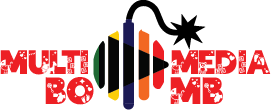TECH
The Best SLAM Solution for Robots Is Here
Before getting into the best solution, the first and foremost things to see are the definition of SLAM and its applications. The full form of SLAM is simultaneous localization and mapping. It is a method, a part of the robots’ artificial intelligence, that helps them create maps and navigate around. This is because, like humans, even robots need maps to find their way. But unlike humans, they cannot use GPS because it does not show accurate area, which can be troublesome for the robots as they need precision.
Read More:
https://gab.com/olivejames618/posts/108883125078223386
https://addandclick.com/read-blog/89489_how-to-book-entertainment-for-a-corporate-event.html
Moreover, GPS does not work so well indoors. This is why they need a simultaneous localization and mapping method to help them map their areas and the location as they go along the path. It is done by the robots when they align the data they collect with the stored data. Through that, they map out the areas for them to go. Even if it sounds easy, there are multiple stages to the process of mapping and aligning the stored data with the newly collected data. And a variety of algorithms are used to get the type of data parallel to the GPUs.
Several applications are used in the SLAM method for robots, as mentioned above that the process contains multiple stages. These applications are:
- Sensor data alignment – With this application, a robot captures the images 90 times a second for depth image measurements and 20 times a second for precise range measurements. In computers, a robot is but a dot. So the sensors in the machine continuously gather data on their surroundings. With these data, they draw out the map and exact location of their current state. It records the distance between their previous location as well.
- Motion estimation – The rotational wheels in the robots measure how much distance it has traveled so far. Inertial measurement units also record the speed and acceleration of the machine’s position. All these data are put together in sensor fusion to know the overall performance and status of the robot’s movements.
- Sensor data registration – Sensor data registration is also called a measurement between two data points. It can also be a measurement between a newly recorded measurement and the already built-in map. After the new data is registered, it can create a new area map or scan over the pre-registered map inside the robot.
- GPU for split-second calculations – The maps drawn by the robot is calculated 20-100 times a second. And for these calculations, the processing power needs to be high level. And for that, the GPUs should also be more powerful than the average CPU.
Read More:
https://addandclick.com/read-blog/89486_why-use-a-entertainment-agency.html
https://addandclick.com/read-blog/89484_modern-age-amp-the-need-for-entertainment.html
https://addandclick.com/read-blog/89479_the-psychology-of-entertainment.html
Visual odometry and mapping for localization – Visual odometry is an application that uses video as the only input for data collection. As for mapping, there are three ways that can be done. One is to record and run algorithms for the individual controlling the robot to build the map based on the algorithm. The second is to stream the data algorithm for the controller at the station to draw out the map. And the third – the most recommended one – is to register data using odometry application and lidar scan so that the mapping can be done through the log mapping technique. This way, the robot does not have to run around the same area again and again to collect information.


